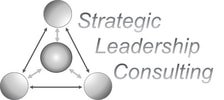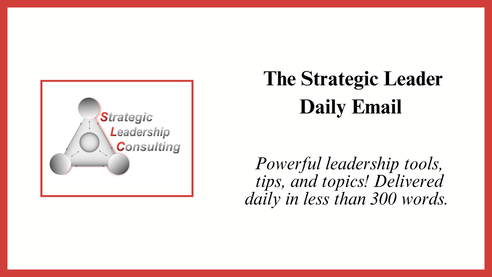|
Colleagues,
Does your “top” priority seem to keep getting pushed to the bottom? Do you have a big goal for accomplishing something during a summer vacation? This week, we’ll look at why we struggle to complete big projects by figuring out why my book remains incomplete. In January I set a goal of finishing the book by June 22. This afternoon I have a “presentation” at i3, the annual conference for South Carolina school administrators and I wanted the book to be a deluxe business card. When I set the goal, the book was already outlined with about 12,000 of a projected 24,000 words completed. In March I began writing a 300-word daily email and from April onward the daily email has been focused on the book themes. Three hundred words times 40 days equals 12,000 words. In March, my travel and number of coaching calls decreased significantly. Despite all of this, no book. Here is what I did instead:
These are all good, but none were my top priority. So, why isn’t the book finished? The answers lie in the Eisenhower Matrix (important versus urgent) and in the four principles of leverage (A-B, 0>1, MVP, M=V/E). We’ll continue to unpack this tomorrow. By working through this process publicly I hope that:
Do good and be well, Frederick
0 Comments
Colleagues,
In Friday’s email I shared that it was my 32nd wedding anniversary. I received more reactions to that single bit of personal information than I usually get in any two-week period! Why? Relationships matter. When we share and acknowledge things about our personal lives, we help weave a collaborative fabric of community, and this fabric contributes to individual and organizational health. People leave organizations all the time, but they rarely leave families. Talk to 100 people and a few of them will talk about their colleagues as family. Those people like their jobs, stay longer, and perform better. In 2004 I completed my dissertation research and found that teachers in a school valued three things from their principal:
Thanks for the anniversary best wishes and the tomato recipes! Do good and be well. Frederick Colleagues,
Apologies for a late email today. Yesterday was my 32nd wedding anniversary, so my head was in a different space. Yesterday I left you with this question: What’s the purpose behind other core functions or structures [in your organization]? I hope you thought about this. Many structures develop for reasons that aren’t related to the organization’s purpose. Organizations are in a constant state of evolution, and often times change happens without strong influence from the purpose. Perhaps the organization (or subunit) ends the year with some extra money that needs to be spent and someone had just been to another site where they were doing open offices, so it sounds like a great idea to spend the “extra” money on reconfiguring the offices. The arrangement of workspaces is a fundamental structure, so this random decision has significant importance. The purpose was just to spend some money, but the impact on the organization could be huge. A similar thing is happening in my garden. We have about 100 volunteer tomato plants coming up. We are now creating a new garden plot to house them all. Do we really need 100 tomatoes? No, but it doesn’t seem right to just throw them away. This new plot increases our garden by about 20%, so it is significant. We have changed the structure of our garden, added extra work for our people (which is Pam and I), and are dedicating resources of time and money (tomato cages and neem oil) for tomatoes that we didn’t plan for and don’t really need. The challenge is first in recognizing these purposeless features and then in getting rid of them. Any one up for homemade spaghetti sauce? Do good and be well, Frederick Colleagues,
Think back to your years of being a student. What was the worst experience you ever had? Does it still hurt or bother you today? Yesterday I facilitated a grading summit with a wonderful group of school leaders that included representatives from early kindergarten through high school. One of the things that made our work so difficult was that grades serve multiple purposes. To complicate issues more, grades are used by different audience outside of the school for different purposes. In the school grades might be used to:
Audiences may use grades for:
This isn’t just about schools. Sticking with the theme of grading, is the way we evaluate our personnel congruent with our organizational purpose? Does our evaluation system help people better fulfill their roles within the organization? What’s the purpose of your organization? That may or may not be an easy question to answer. What’s the purpose behind other core functions or structures? You won’t know unless you ask the question! Do good and be well, Frederick Colleagues,
Yesterday we talked about four of the six dimensions or organizations and how all issues can be viewed through the lens of alignment. The fifth dimension of organizations is external force. External forces are factors that influence the organization, but which emanate from beyond its control. These forces have various causes such as changes in resource availability, new laws or policies, changing expectations from society, or a worldwide pandemic. External forces are challenging because we have little control over them. If our organization is dependent on paper and the price of paper goes up, that impacts our ability to keep our resources aligned with our purpose. However, the biggest impact external forces can have is when they effect organizational purpose. For example, the COVID 19 pandemic has rocked the purpose of public schools in the United States. Most US schools have a formal purpose involved with helping students grow into productive and contributing members of society and have agency in their lives. Our schools do this primarily by providing a formal academic education supplemented with various intra and extra-curricular activities. However, with the closing of schools due to the pandemic, many schools’ most immediate concern became how to get food to children and their families. For example, in both North and South Carolina, roughly 50% of students are eligible to receive free and reduced meals. With schools closed, many children lost their primary source of nutrition. This situation was made more dire as many low wage workers lost their jobs. Think about this. Large and complex organizations designed primarily to deliver a face-to-face academic education suddenly became focused on food delivery. Wow. How has the pandemic shifted the focus of your organization’s purpose? Do good and be well, Frederick |
Categories
All
Archives
April 2024
|


 RSS Feed
RSS Feed